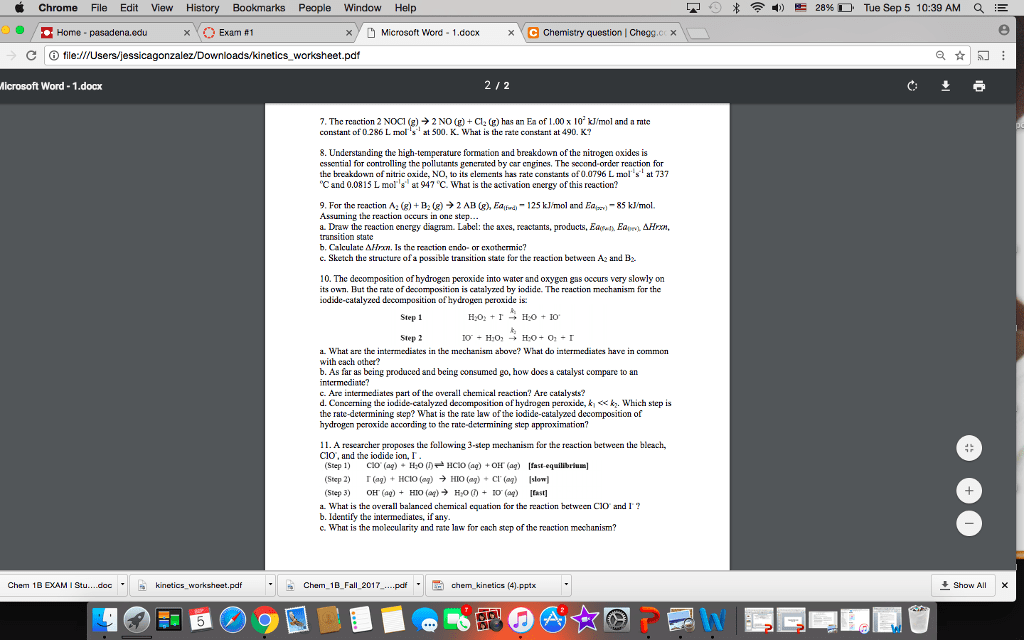CHEM 104 Lecture Notes - Lecture 10: Reaction Mechanism, Activation Energy, Enzyme
Document Summary
* the mechanism for a catalyzed reaction is different from the mechanism of the same reaction without the catalyst * The rate-limiting step in the catalyzed mechanism has a lower activation energy and therefore is faster than the slow step for the uncatalyzed reaction. A catalyst reacts in an early step of a mechanism and is regenerated later. Homogeneous catalyst: a catalyst that is present in the phase as the reacting substance of substances. Although the mechanism is different, the initial and final energies for the catalyzed reaction are the same for the uncatalyzed reaction. Means 1e and 1h are the same for the catalyzed and uncatalyzed reaction. Enzyme: a highly efficient catalyst for one or more chemical reactions in a living system. Mainly globular proteins (polymers of amino acids) Most enzymes are among the most effective catalysts known. Cofactors: i(cid:374)orga(cid:374)i(cid:272) or orga(cid:374)i(cid:272) (cid:373)ole(cid:272)ules or io(cid:374)s that (cid:374)eed to (cid:271)e prese(cid:374)t for a(cid:374) e(cid:374)zy(cid:373)e"s catalystic activity to be fully available.


